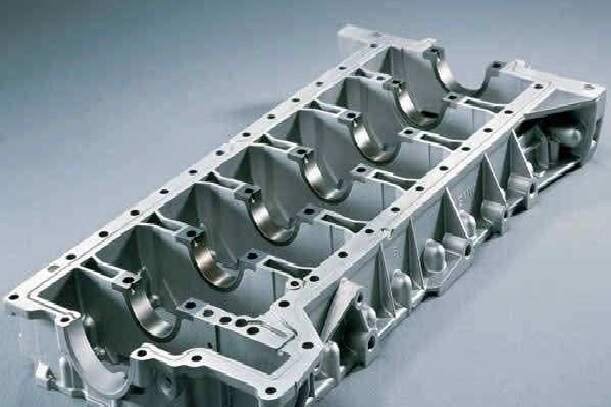In this article we are going to learn about types of bearing metals and their uses in making bearing.
What are Bearing Metals ?
Bearing metals are alloy (often of lead or tin base) used for making bearings.
Babbitt metal, also known as bearing metal, refers to any of several alloys used for the bearing surface in a plain bearing.
Types of Metal Bearings
Bearing metals may be classified into following groups :
1. Copper-base bearing metals containing copper, tin and lead.
2. Tin-base bearing metals containing tin, antimony, and copper.
3. Lead-base bearing metals containing lead, tin, and antimony.
4. Cadmium-base bearing metals containing cadmium and nickel.
Those alloys in which tin, lead, and cadmium are predominating elements are designated as white-metal bearing alloys. They have the properties of high plasticity combined with the low hardness and comparatively low melting point, which facilitates the formation of bearings by casting the metal directly in place and usually require no machining.
The copper-base alloys are harder and stronger than the white metals and are used for bearings which are required to resist heavier pressures. Tin-base white metals are used where bearings are subjected to high pressure and load, whereas for light loads and pressure lead-base alloys are used. Of the lead-base alloys, the alloys which contain 80 per cent lead and 20per cent antimony is generally used.
Cadmium-base bearing metals have more favourable properties, especially at elevated temperatures, than the tin-base alloys. The compressive strength of the cadmium-base bearing alloys are greater than those of the tin-base alloys.
Conditions for Efficient Bearing Metals
To give an efficient bearing combinations the following conditions are necessary :
1. That the shaft and bearing be dissimilar in their nature with bearing softer than the shaft.
2. That the most efficient bearing metal is one consisting of small pieces of a comparatively hard metal embedded in the softer body of another metal.
3. That the bearing metals should have sufficient compressive strength to carry the bearing pressure, should wear to smooth surfaces as they rub together, and should develop a minimum of friction when they actually come in contact, as for example, when a shaft is starting or stopping
Which metal is used for Bearings?
Most ball bearings are made of a type of steel known as high carbon chromium steel, often called chrome steel. This is used for reasons of cost and durability. Bearings are also made from other materials such as stainless steel, ceramics and plastic.
What is meant by Bearing Material ?
The term bearing material is generally used to describe the special. Materials used in plain bearings, that is, bearings in which a load is. transmitted between relatively moving parts by sliding contact and. without the use of balls or rollers.
What Metal are Bearings made of ?
Ball bearings are most commonly made of steel, ceramic or plastic. While every ball bearing is comprised of four main parts—an outer race, an inner race, a cage and balls—each has its own set of unique characteristics.
What is Bearing in Steel ?
Bearing steel is special steel featuring high wear resistance and rolling fatigue strength. High-carbon chromium bearing steel, engineering steel and some types of stainless steel and heat resistant steel are used as materials of bearings and for other purposes.
Which Material is More Useful for Bearings?
The most common material used to produce the load carrying components in precision ball bearings, roller bearings, and tapered roller bearings is 52100 chrome steel. These components are the bearings inner and outer rings, balls and rollers.
Hope you like the article about Bearing Metals. Please give your feedback in the comment below.
Check Out Other Important Topics
Different Types of Steel & Constituents of Steel
Steel Making Process – Complete Overview with Flowchart
Cast Iron – Properties, Types & Uses
Recovery Recrystallization and Grain Growth – Working Process
Constrained Motion – Definition, Types, Examples, Images
| IC Engine | Important PDFs | Boilers | Synergy Maritime Exam | Naval Arch | MEO Class 4 |
| Interview Questions | Difference Between | Types of Pumps | Auxiliary Machines | Types of Valves | Home |


